Kingdom Fungi contains some of the most ecologically and economically important organisms. They decompose dead organic matter, and release the essential nutrients back to soil. This ensures the continuity of nutrient cycles in an ecosystem. They form symbiotic associations with plants, and provide them with essential nutrients. Some fungi are used for the production of drugs, bread, and beverages. Some are also edible by humans.
Members of this group are very diverse in morphology and habitats. The mushrooms that can be seen on wet tree branches are fungi. The infections seen on rotten bread are also fungi. The yeast used in cooking or beer production is a unicellular fungus. Fungi are usually seen on moist and warm places.
Fungi: Nutrition
Fungi are heterotrophic. They usually absorb food materials from their surroundings. The food material acts as the substrate for fungi. It secretes digestive enzymes on to this substrate, decomposes it and absorbs the nutrients.
Fungi that feed on dead and decaying organic matter are called saprophytes. They can be used to remove litter and other debris from the ground. Since, fungi absorbs lots of nutrients, other animals use them as food.
Some fungi are parasitic. They cause a number of plant and animal diseases. Ringworm and athlete’s foot are fungal diseases in human. Plant diseases caused by fungi are rusts, smuts, leaf rot and stem rot.
Mycorrhizae:
Mycorrhizae or fungal roots are symbiotic relationships between fungi and plants. Fungi are able to decompose dead organic matter to release nutrients. They are able to absorb large amount of water also. These are readily available for the plants. In return, plants provide food for the fungi.
Fungi: Structure
Yeast is a unicellular fungus. All other fungi are multicellular, and filamentous. During a part of their life cycle, fungi will produce spores. From these spores, thread like structures called hyphae will grow. A network of hyphae is known as mycelium. The cell walls of fungi are made of chitin and polysaccharides.
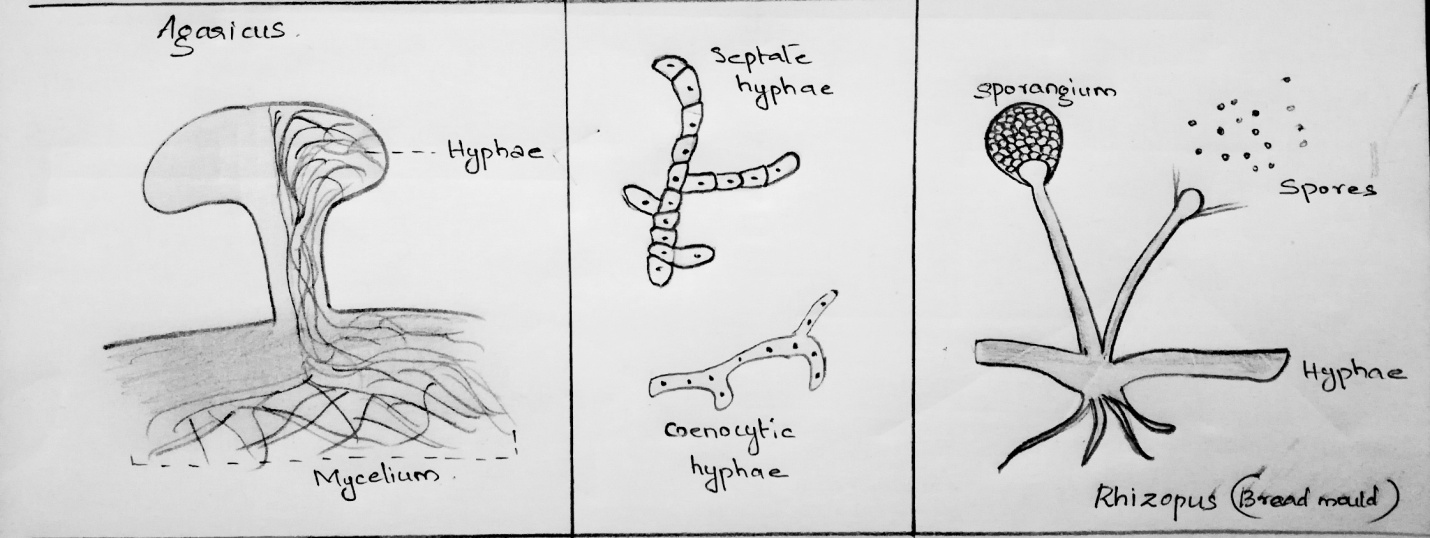
Fungi: Reproduction
Fungi reproduce both sexually and asexually. Asexual reproduction involves budding, fission, fragmentation and spore formation. Sexual reproduction involves fusion of the gametes. First, the protoplasms of the cells will fuse (plasmogamy) followed by fusion of the nuclei (karyogamy).
Fungi: Classification
Based on the morphology of mycelium, mode of sperm formation and fruiting bodies, fungi can be divided into four groups:
Phycomycetes
They are considered to be the most primitive fungi. They are (both fresh-water and marine) being parasitic on plants and animals including fish and insects, or are saprophytic on submerged vegetable and animal debris. Very few are mycorrhizal. They reproduce asexually by forming spores. Sexual reproduction involves the formation of a zygospore by the fusion of two similar gametes (isogamous) or two dissimilar gametes (anisogamous or oogamous).
The most primitive phycomycetes have unicellular uninucleate uniflagellate cells with or without any surrounding membrane. Others have a scanty mycelium consisting of a few short hyphal branches. The majority of the Phycomycetes, however, have a profusely branched well-developed, filmentous and aseptate mycelium.
Eg. Rhizhopus (bread mould)
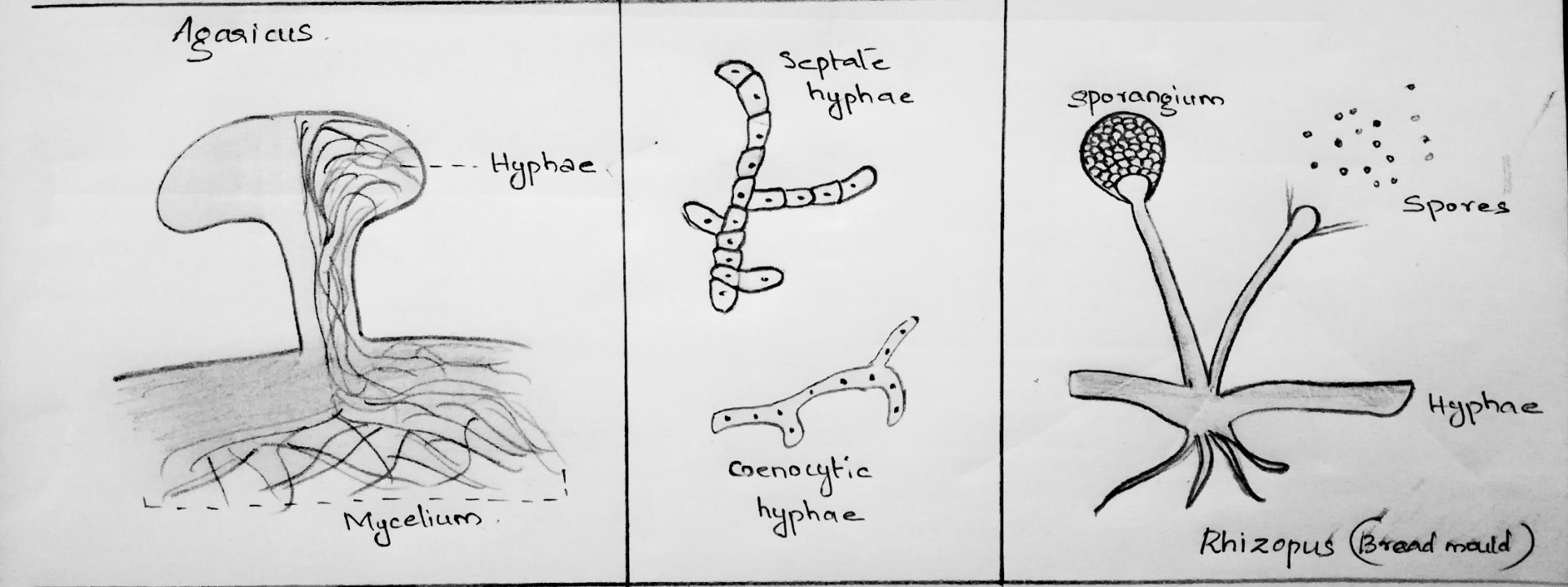
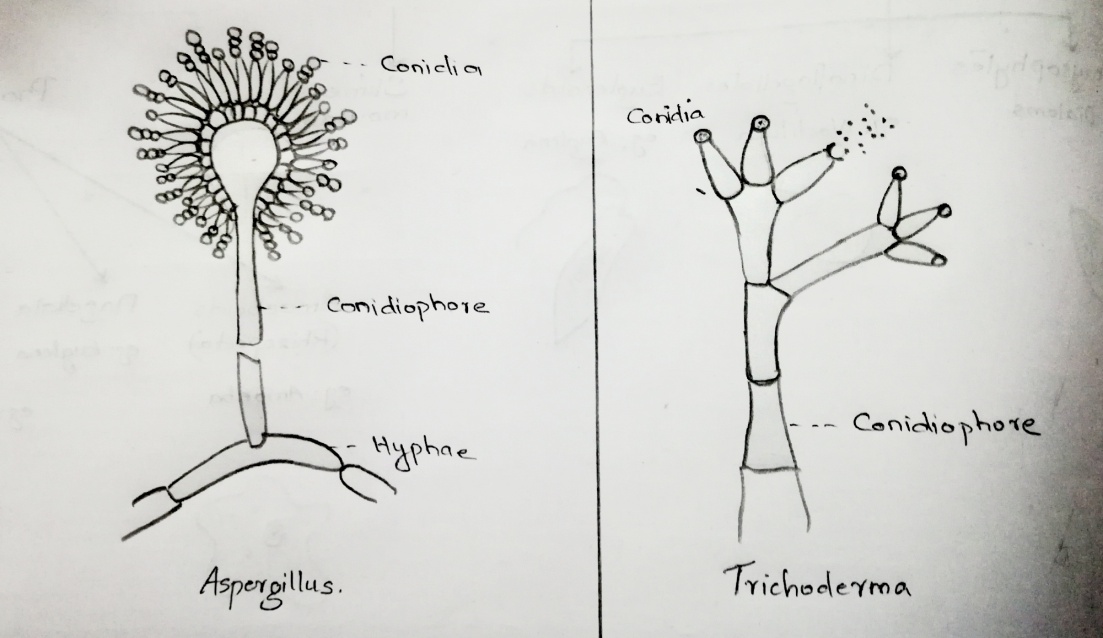
Acsomycetes
This group contains yeast and other fungi commonly known as ‘sac fungi’. They are mostly multicellular (except yeast, which is unicellular), and are saprophytic, parasitic or coprophilous (feeding on dung). Unlike phycomycetes, the ascomycetes are septate. Their filaments are partiotioned by cross walls known as septa.
Yeasts reproduce by budding (asexually) and by forming sacs (sexually). During asexual reproduction, conidiophores (mycelium specialized for reproduction) bear asexual spores called conidia. They germinate to form mycelium. Sexual reproduction takes place via sac like structures called asci.
Eg. Aspergillus, Claviceps, Neurospora.
Bascidiomycetes
This group mostly includes mushrooms, toadstools, bracket fungi and puffballs. They grow in soil, on logs and tree stumps and in living plant bodies as parasites, e.g., rusts and smuts. The mycelium is branched and septate, as in the case of ascomycetes.
Reproduction occurs mainly by vegetative means such as by fragmentation. Asexual reproduction is absent. The sex organs are absent, but sexual reproduction takes place by the protoplasmic fusion (plasmogamy) of two vegetative or somatic cells of different strains or genotypes. This results in a dikaryon (single cell with two nuclei) which ultimately gives rise to basidium. Karyogamy (fusion of nuclei) and meiosis take place in the basidium producing four basidiospores. The basidiospores germinate to form haploid hyphae, and thus the cycle continues.
Eg. Agaricus (mushroom)
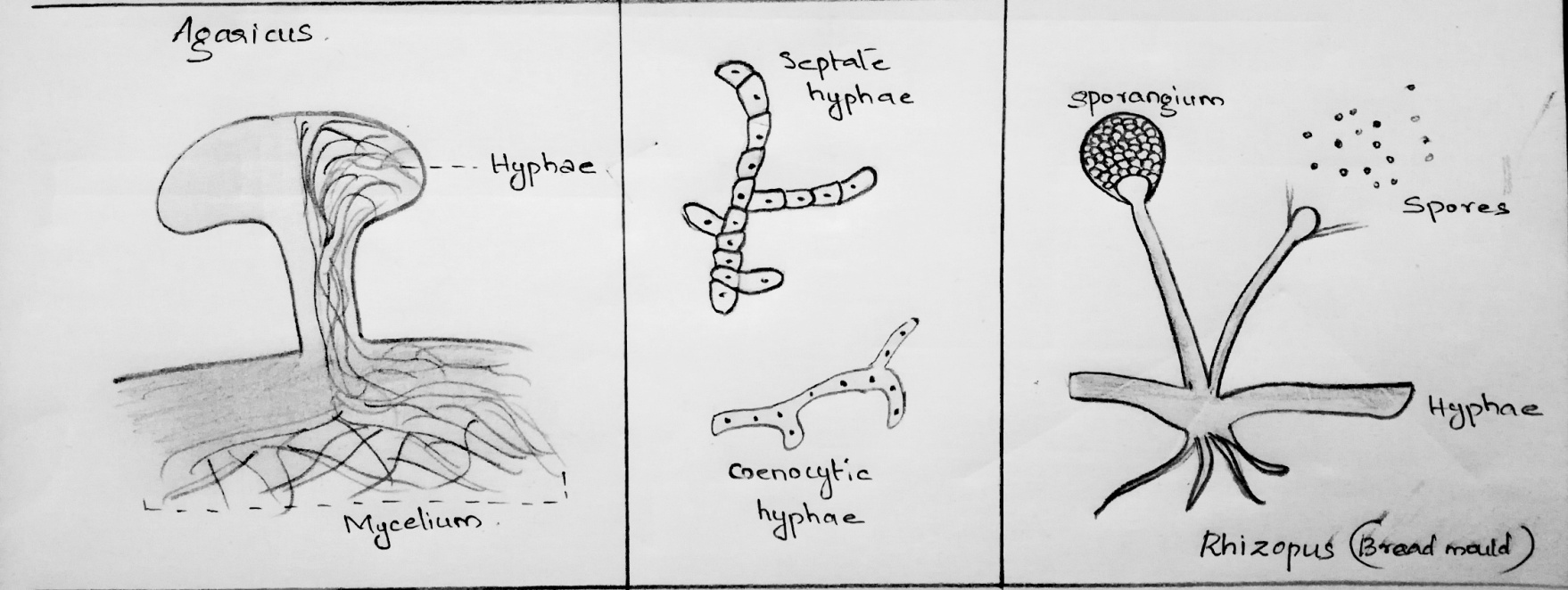
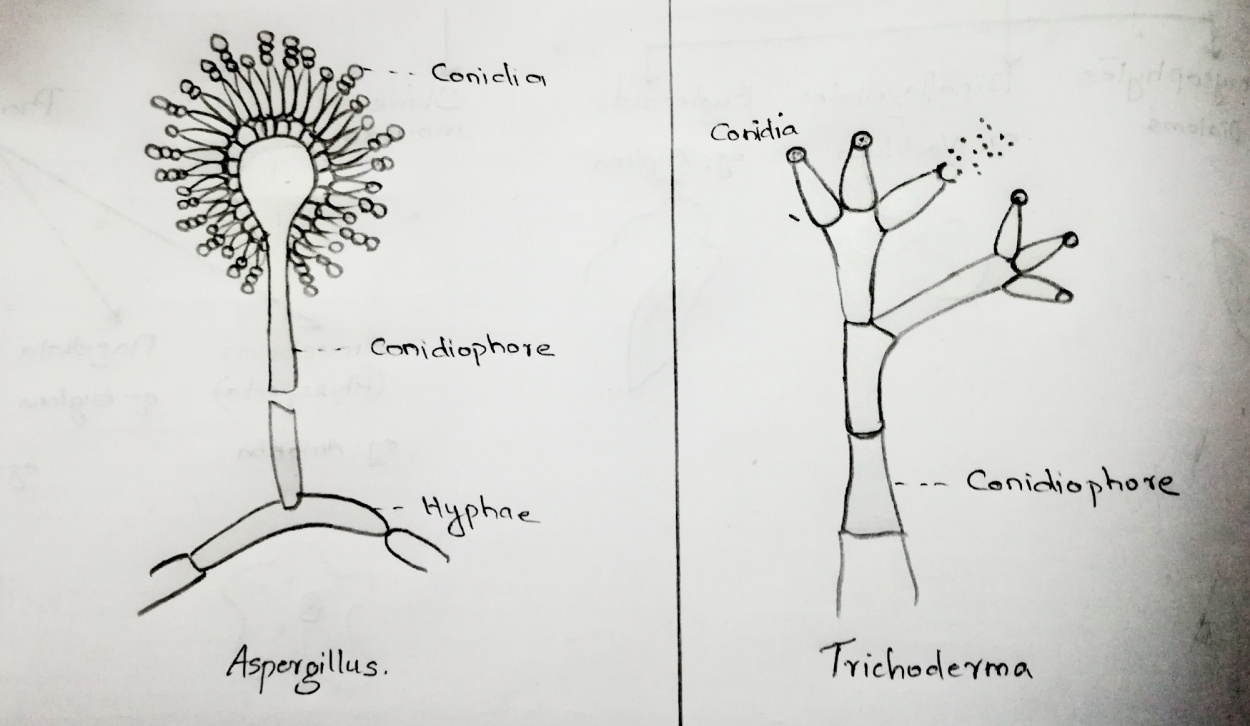
Deuteromycetes
Deuteromycota includes all fungi which have lost the ability to reproduce sexually. Only the vegetative and asexual phases are known, and were commonly called imperfect fungi.
Asexual reproduction takes place by forming conidia. The mycelium is septate and branched. The members of deuterosomes are mostly decomposers. The remaining are saprophytes or parasites. Some examples are Alternaria, Colletotrichum and Trichoderma